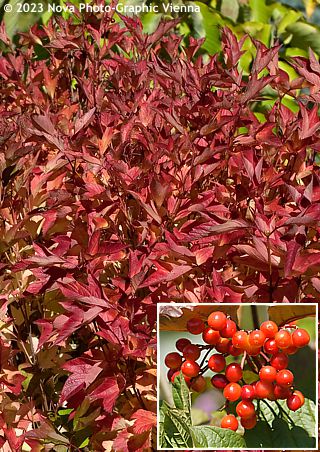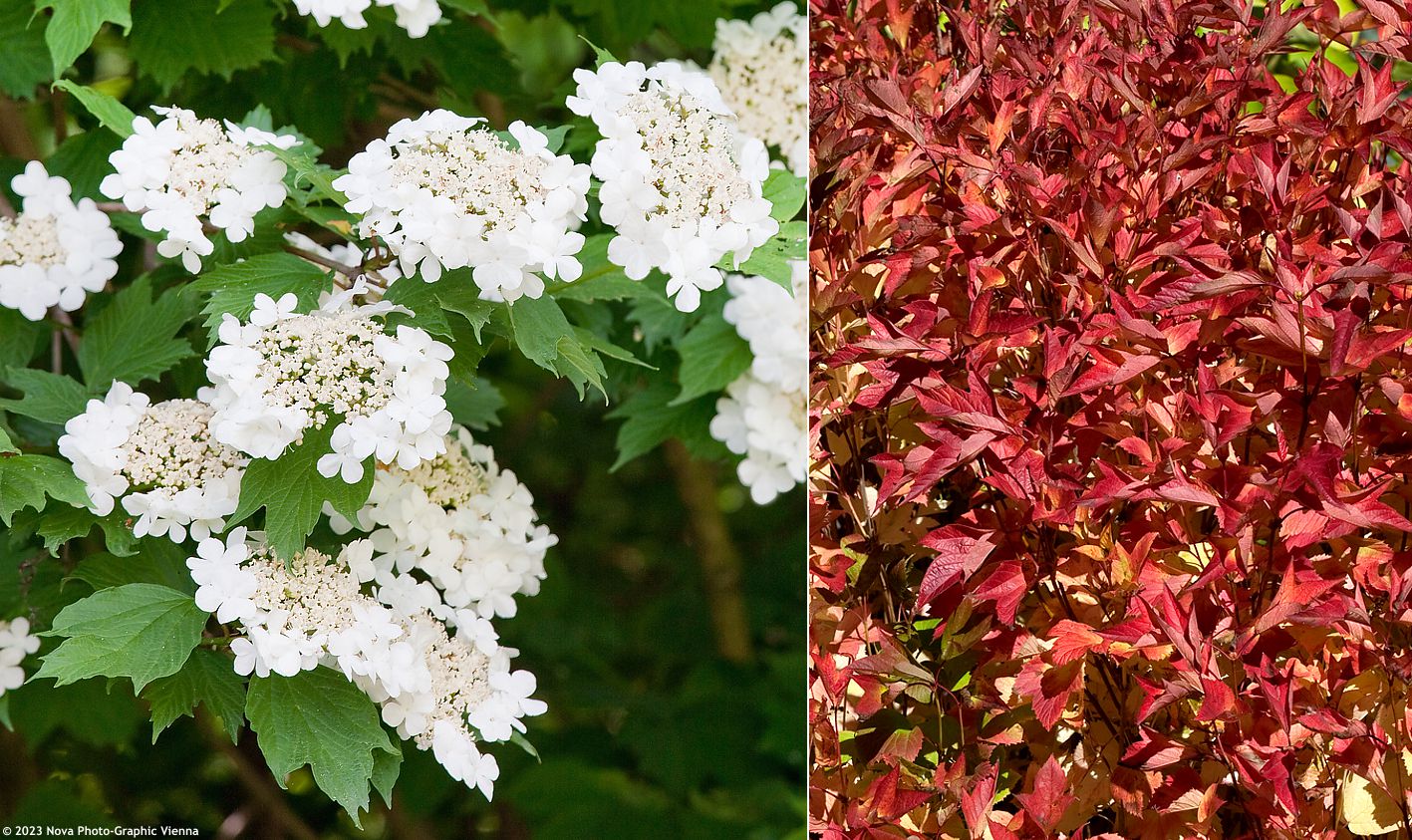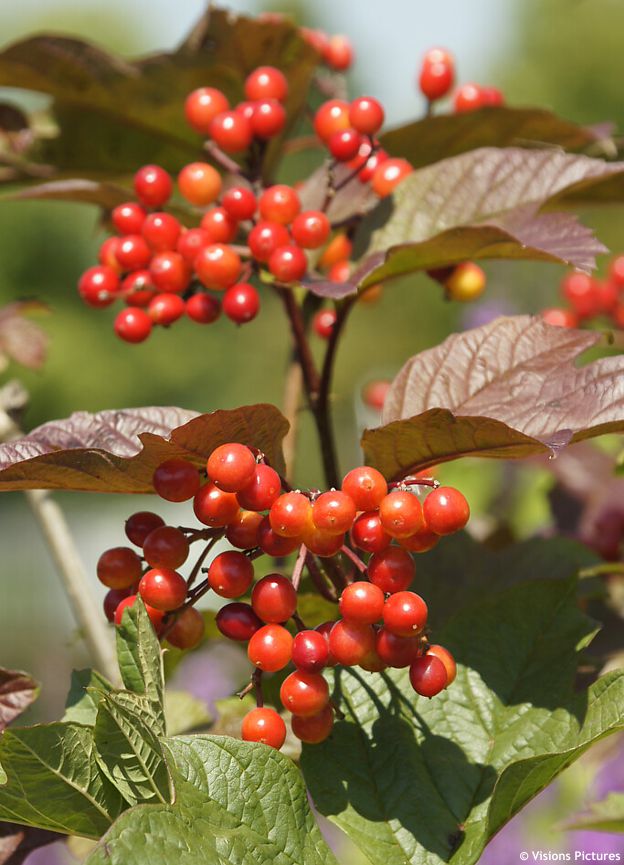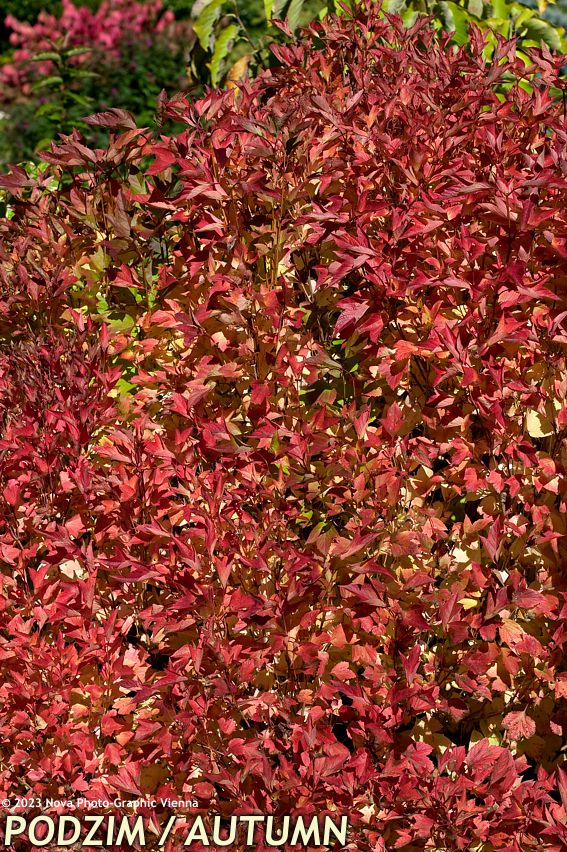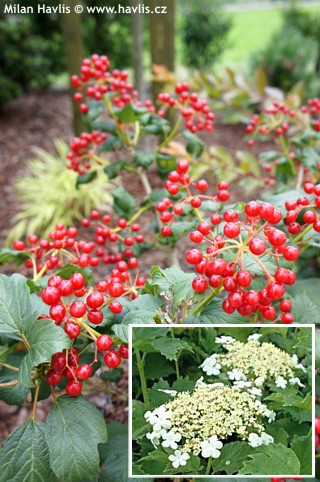Viburnum trilobum (Viburnum opulus var. americanum) 'ALFREDO' American highbush cranberry
Viburnum
American highbush cranberry is a very hardy viburnum species originally from the northeastern part of North America, where it naturally occupies large areas from Newfoundland to British Columbia in Canada, and from Washington state to northern Virginia in USA. It is closely related to the European viburnum opulus and is sometimes assumed to be historically the same species yet from times before the continents split. The botanical species is a large shrub suitable for parks, groves, and edible gardens (eco-gardens), as its berries are used in the same way as cranberries.
Alfredo is a much shorter and more compact growing variety of American highbush cranberry. It was selected by Alfredo Garcia from the Bailey Nursery in Minnesota, USA. It bears attractive, deciduous, maple-like, three-lobed leaves with heavily serrated margins that are bright green from spring to summer and vivid red and maroon in autumn. They are significantly smaller than on the species and make the completely cover the plant. In late spring appear flattened cymes composed of small, white, fertile flowers in the centre, and larger, sterile flowers on the outskirts.
The plant is self-fertile and in late summer produces many plenty of glossy, bright red, edible berries high in pectin and vitamin C. They have a sour and slightly astringent taste like cranberries and are utilized in the same way, but as the Alfredo variety blooms profusely only at a later age be patient when expecting a good harvest.
It grows moderately, about 30 cm per year, and forms upright, many-branched, and dense shrubs filled nicely from the ground, so it does not require other plants in front of them covering its lower parts. Use it as a smaller specimen plant in small gardens or front yards, in informal hedges, foundation plantings, and in borders with other deciduous shrubs. Its leaves are a delicacy for the larvae of the viburnum moth, which can spoil the beauty of the bush yet before summer. Observe the leaves from May to June, when they are commonly attacked and treat the plant if necessary. There are also preventive ecological treatments making the leaves produce repellent substances owing to which the beetle will stay away from your viburnum.
Viburnum trilobum prefers full sun or filtered sunlight, moderately fertile to poor soil that will not dry out quickly. In the wild it naturally grows in moist conditions and once established it can handle temporary waterlogging, but long-lasting drought may ruin its soft leaves. Alfredo keeps a nice shape even without pruning but can be trimmed or rejuvenated. You can prune it heavily in late winter for rejuvenation, but it won’t bloom that year, or trim it lightly immediately after flowering - cut back no more than one-third. You will lose the fruits, but your shrub will develop a nicer framework for future years. It is extremely hardy down to at least -42 °C (USDA zone 3) and can be cultivated in large containers.
Last update 31-01-2023

































